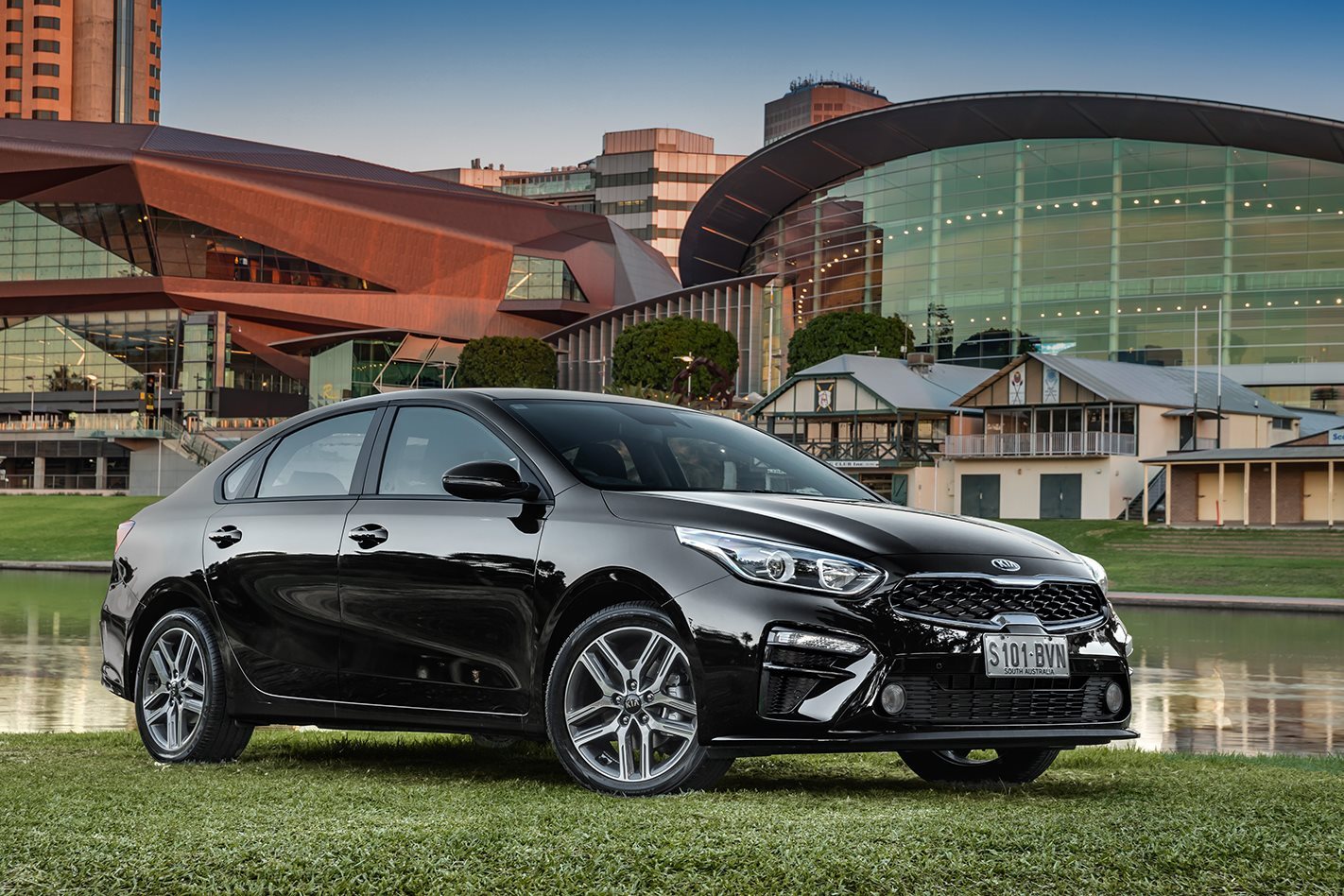
What is the Kia Cerato Sport?
Available with equally-priced hatch or sedan versions, the Kia Cerato Sport is the second-most affordable variant in the Kia Cerato small car range, which also includes the entry-level Cerato S priced from $21,490, Sport+ ($29,340) and the turbocharged GT ($34,490).
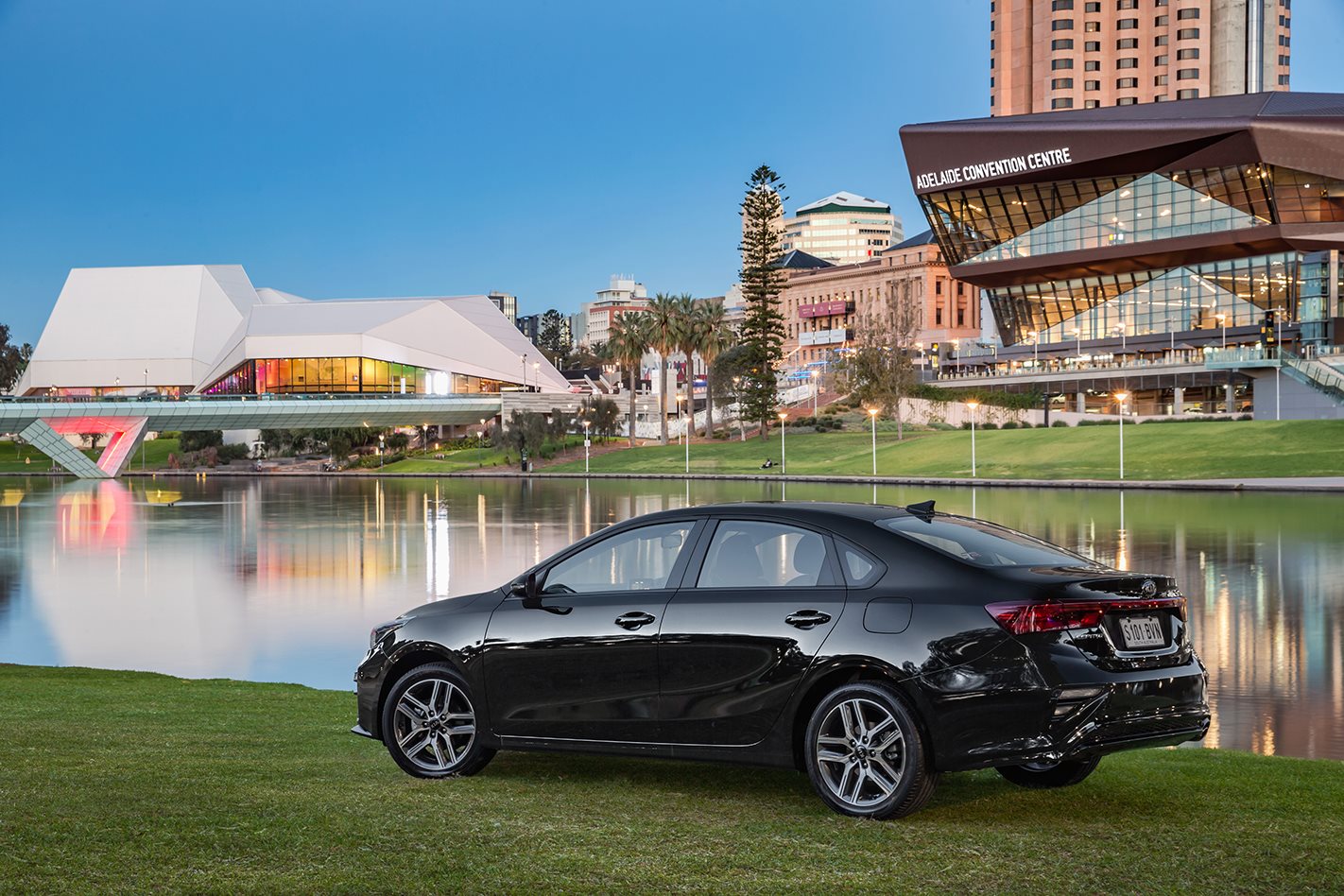
We’re testing the Cerato Sport manual sedan, which starts at $23,490 but also comes with an optional Safety Pack that takes its retail price to $24,490.
What is the Kia Cerato Sport manual like to drive?
Putting a Sport badge on the 2.0-litre Cerato is like someone greeting me with ‘G’day, Sport’ – it’s quaint and in no way reveals any form of athletic prowess.
The 112kW/192Nm 2.0-litre four-cylinder petrol manual and automatic powertrains carry over from the previous generation Cerato. It’s a hard worker, but the six-speed automatic feels overworked at highway speeds. The six-speed manual, however, lets you squeeze additional pep from the dated engine resulting in a surprisingly engaging drive.
The gear shifter feels taught and falls into the right gear easily which allows for quick shifts to satisfy your inner racer.
That said, it’s also an excellent manual gearbox for beginners, with a long first gear and forgiving in that don’t require quick or precise footwork. And it has hill start assist, which holds the brake when you’re stopped on an incline making it easier to engage first gear without rolling back.
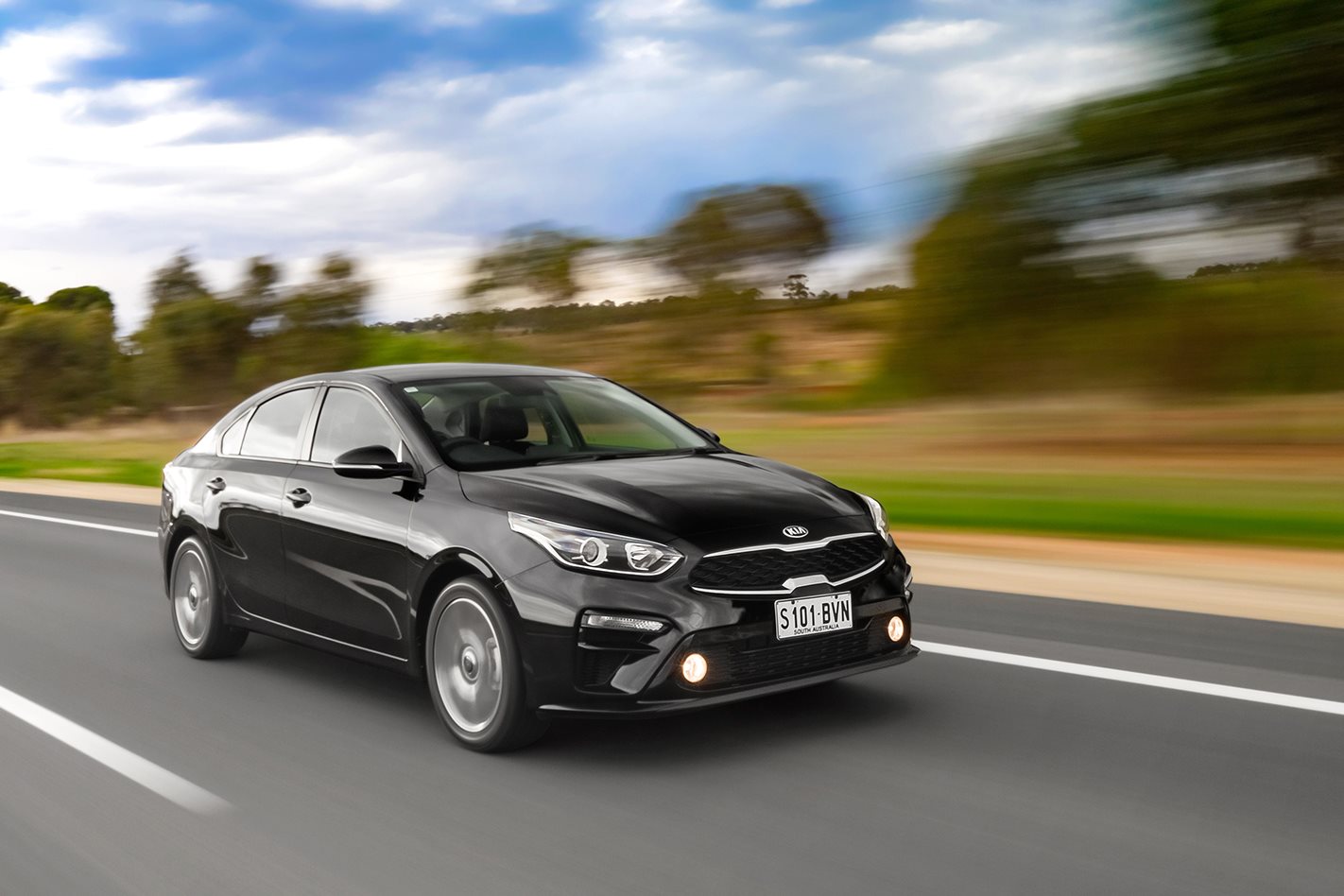
The suspension has been tuned to suit Australian conditions and provides a comfortable ride without sacrificing handling and stability. Ride comfort is also helped by the 17-inch wheels that absorb jarring bumps better than the 18-inch wheels in the upper-spec Sport+ and GT.
What is the Kia Cerato Sport like to live with?
This is an attractive and well-equipped small car for the price, with a standard features list that includes an 8.0-inch infotainment screen with Apple CarPlay/Android Auto smartphone pairing, Bluetooth, reversing camera with parking guidelines, front and rear parking sensors, cruise control, tyre-pressure monitor, and dusk-sensing headlights.
Spending $3000 more on Sport over the entry-level S brings sportier-looking cloth seats, premium steering wheel, softer-touch door trims, satellite navigation, and better-looking 17-inch alloy wheels instead of 16-inch steel wheels with hubcaps.
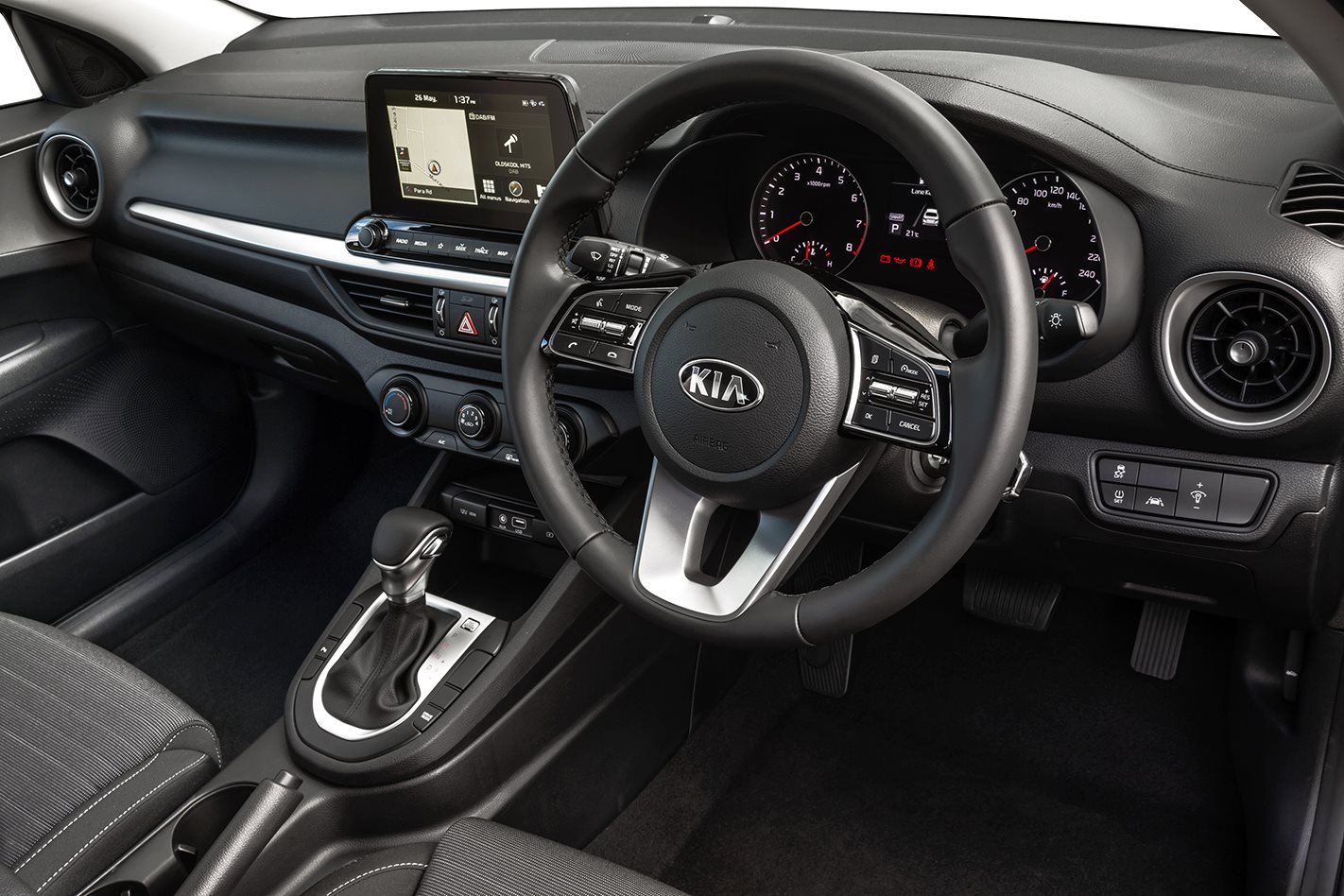
The Safety Pack is well worth the extra $1000 and adds active safety features including city-speed autonomous emergency braking, lane-keeping assist, and seatbelt reminders for all five seat positions. Unfortunately, the manual version misses out on adaptive cruise control.
The Cerato’s interior echoes the bigger Kia models and is ergonomically friendly, from the high-mounted dashboard buttons to the switches on the steering wheel.
It’s one of the roomier small cars too, with a spacious back seat that’s welcoming for two average-sized adults or three smaller people. The Sport spec misses out on rear air-conditioning vents and map pockets behind the front seats, which are available in the Sport+ and GT. Nevertheless, there’s enough storage, with a centre console tub and door bins with bottle holders.
The Cerato sedan has a big, 502-litre boot, which is bigger than the hatchback’s 428 litres though you’ll find it a little harder to fit bulky loads through the boot lip.
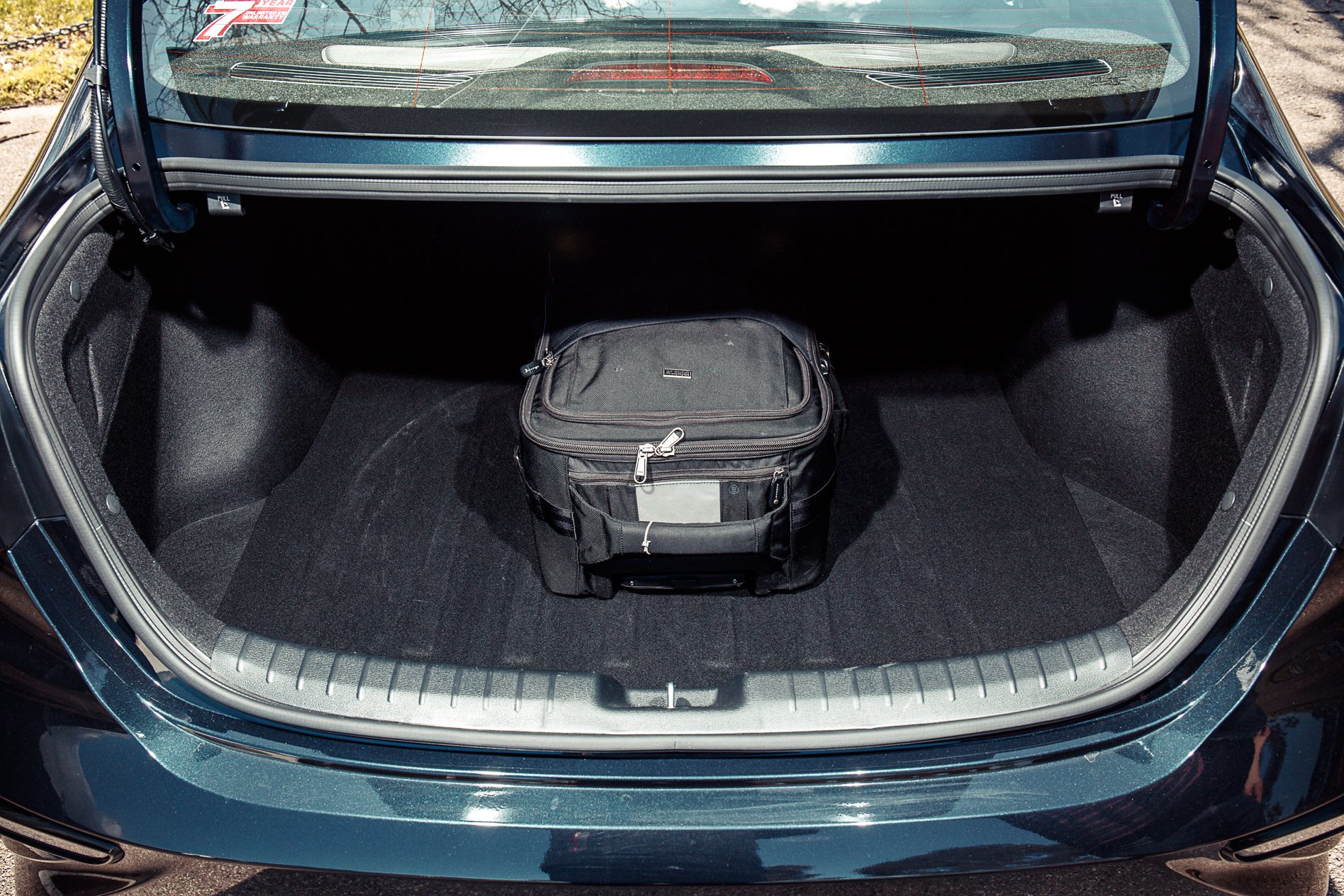
The 2.0-litre Cerato is reasonably economical, particularly with the manual powertrain which has an official fuel consumption of 7.4 litres/100km (city and country combined), while the auto consumes 7.6L/100km.The Cerato has a seven-year, unlimited-kilometre warranty and capped-priced servicing for the duration with 15,000km intervals priced at $257, $469, $336, $623, $309, $596, and $328.
Is the Kia Cerato Sport manual good value?
The Cerato Sport brings enough extras to the table to justify the $2000 premium over the entry-level Cerato S while still coming under $25,000 even with the $1000 Safety Pack.
It’s also $2800 cheaper than the auto – that’s a premium usually worth paying with small cars, but this is one of the few where I actually prefer the manual version even for the busy daily commute.

As for choosing between this and the Cerato Sport hatch; they’re similar enough to make choosing between the two just about your preferred body style.
Of its few manual small-sedan rivals, the Mazda 3 G20 Pure ($24,990), and Skoda Octavia 110TSI ($23,890) are certainly worth a look, there’s also the Toyota Ascent Sport manual ($24,835), though its gearbox feels a little uninspiring and was obviously designed with company fleets in mind.
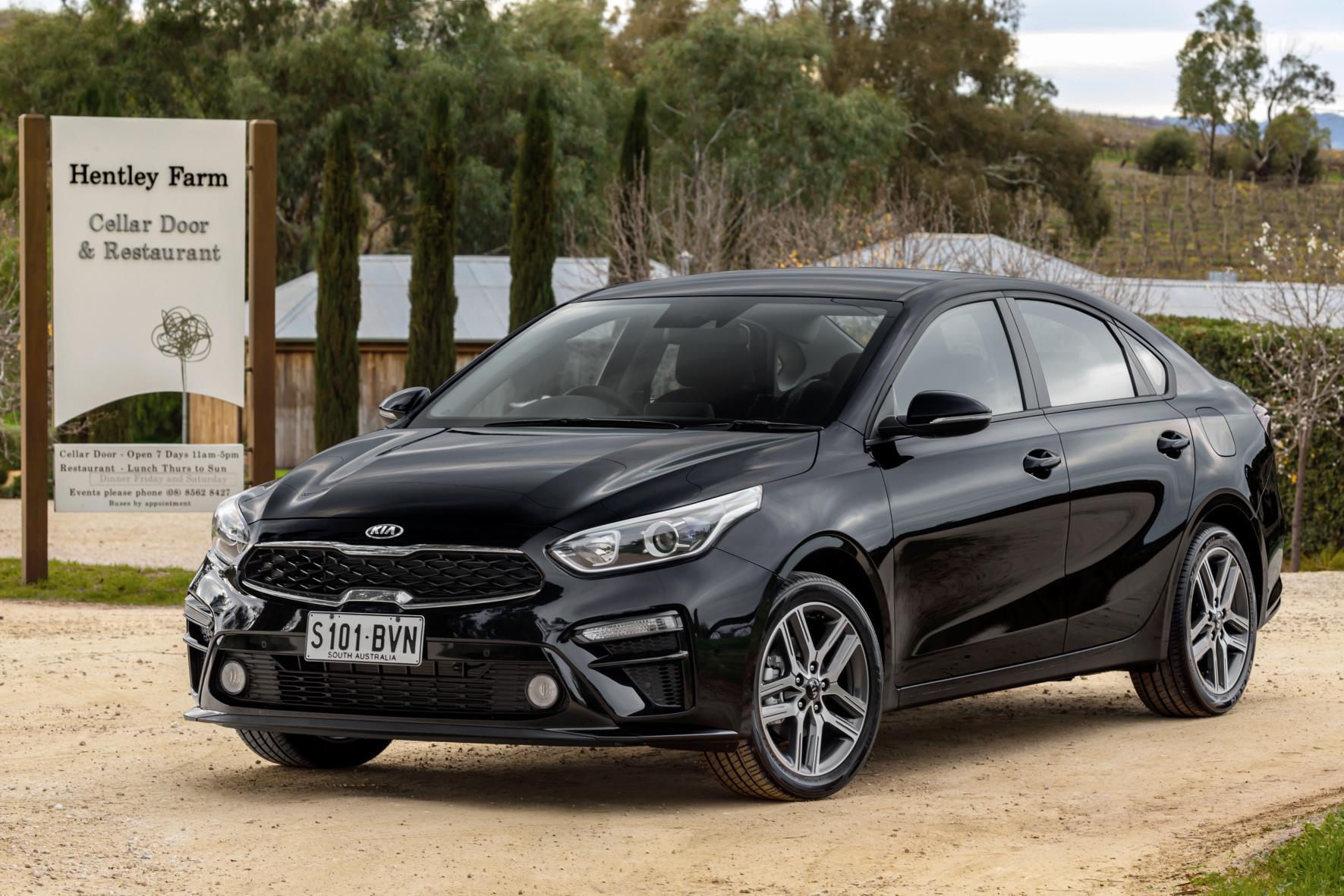
The Mazda gives the Cerato the biggest run for its money especially in terms of interior finish and styling, however, the Kia has a slight edge when it comes to practicality while offering a two-year longer warranty. Either way, you’ll be making a good choice.
Pros: Engaging manual gearbox, standard equipment, spacious interior Cons: Active safety costs extra, heavier and thirstier than the previous model
Rating: 4/5




